With the increasing global attention to environmental protection and sustainable development, the recycled non-ferrous metal industry has gradually become a hot spot in the market, showing broad development prospects. However, the industry also faces many challenges, such as improving the recycling rate of scrap metal, reducing energy consumption in the recycling process, and reducing environmental pollution. Therefore, scrap metal balers are used. These machines are designed to compress loose, bulky scrap metal into dense, easy-to-transport bales, thereby reducing the volume of waste by up to 80%.
What is a scrap metal baler?
A scrap metal baler is a type of waste treatment equipment used in the metal recycling and smelting industries. It is mainly used to compress metal scraps, scrap steel, scrap aluminum and other raw materials, and squeeze them into qualified furnace materials such as cuboids and cylinders for easy transportation, storage and reuse.
The equipment is hydraulically driven and has manual or PLC automatic control modes. It supports multiple discharging methods such as side-flipping bags and side-pushing bags, and can use diesel engine power in an environment without power supply.
This series of equipment has the following features:
- All are hydraulically driven, working smoothly, safely and reliably;
- Manual or PLC automatic control operation mode is adopted;
- There are four types of discharge: side-flipping bag, side-push bag, front-push bag or no bag discharge;
- No foot screws are required for installation, and diesel engines can be used as power in places without power supply.
GIGAPA GFB-P series fully automatic door-cover metal baler is not only multifunctional, but also can flexibly handle various scrap metal materials and has a wide range of applications. Its unique compression and baling technology can reduce the volume of scrap metal to one-fourth of the original, thus saving floor space, making it easier to load and pack, and effectively reducing transportation costs. In addition, the high-density recycled materials produced by the machine can not only increase the furnace rate, but also further reduce smelting costs. Its ultra-tough mortise and tenon plate welding box structure enables the machine to easily cope with the compression needs of various scrap metals, ensuring the stability, durability, wear resistance, impact resistance, and long service life of the equipment. The clever door-cover design can easily cope with oversized and high-strength difficult-to-compress scrap metals.
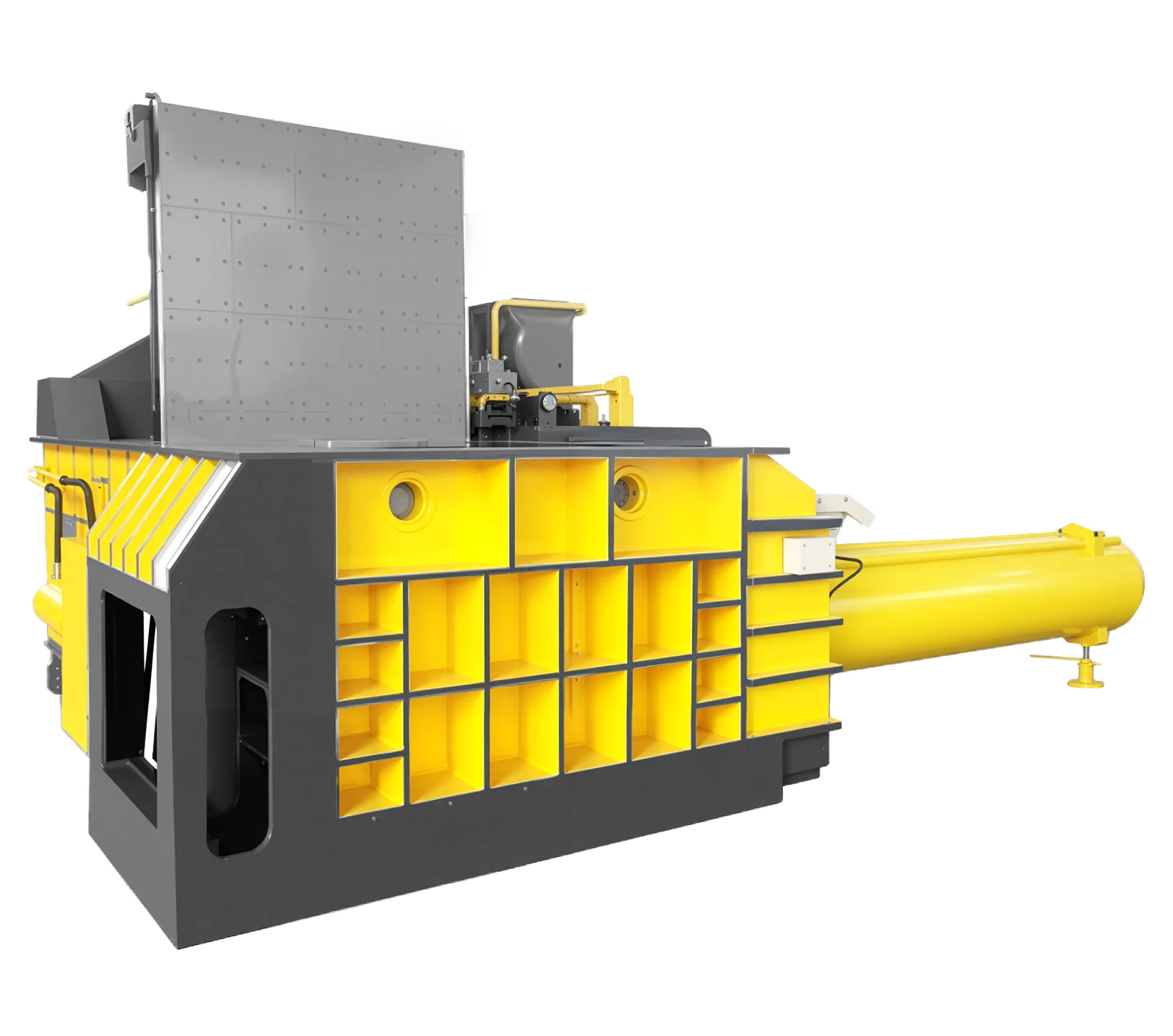
Working principle of scrap metal baler
The working principle of scrap metal baler is mainly based on the hydraulic transmission system. The hydraulic oil is delivered to various actuators (such as main pressure cylinder, door cover cylinder, door opening cylinder, etc.) through the hydraulic pump, thereby driving various parts of the equipment to complete a series of actions such as pre-pressing, closing, compression, pressure maintenance, and pressure relief.
Specifically, when the metal scrap is put into the material box, the door cover rotates and closes under the action of the cylinder to form a closed compression chamber. Subsequently, the main pressure cylinder starts to work and compresses the metal scrap into a tight bale. During the compression process, the hydraulic system will automatically adjust according to the preset pressure value to ensure that the quality and density of the bale meet the requirements. After the compression is completed, the door opening cylinder is activated, the door cover is opened, and the bale is pushed out of the material box, and the entire packaging process is completed.
What types of scrap can be baled?
Scrap metal balers can handle a wide range of ferrous and non-ferrous materials, including:
- Aluminum cans and profiles
- Steel drums and steel sheets
- Copper wire and pipe
- Iron rods and rebar
- Radiators and body panels
- Stainless steel offcuts
Depending on the machine’s specifications, it can also be customized to specific metals or production needs.
Types of scrap metal baler
Based on the different structures, functions and application scenarios, metal briquetting machines can be divided into many types. Among them, according to the pressure size, they can be divided into small, medium and large briquetting machines; according to the packaging method, they can be divided into vertical, horizontal and side briquetting machines; according to the degree of automation, they can be divided into manual, semi-automatic and fully automatic briquetting machines.
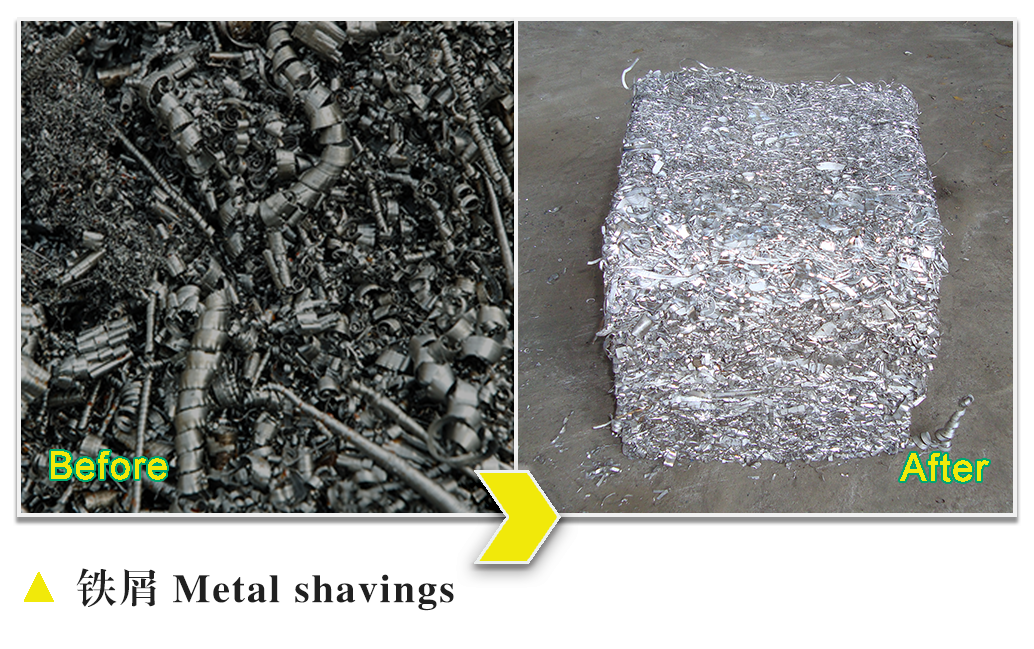
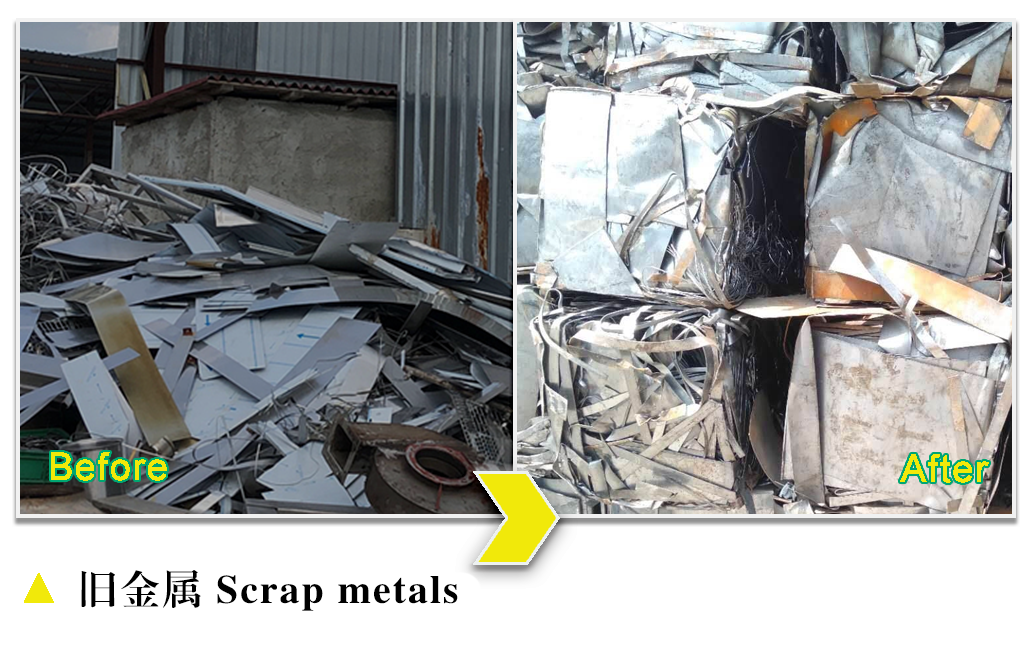
Future development trend of scrap metal balers
Looking to the future, scrap metal balers will develop in a more intelligent, automated and efficient direction. On the one hand, with the continuous development of technologies such as the Internet of Things, big data, and artificial intelligence, metal briquetting balers will realize functions such as remote monitoring, intelligent diagnosis, and automatic adjustment to improve the operating efficiency and stability of the equipment. On the other hand, with the increasingly stringent environmental protection regulations and the growing demand for resource recycling, metal briquetting balers will pay more attention to technological innovations in energy conservation, emission reduction, and environmental protection to meet market demand.
In addition, with the rapid development of emerging industries such as new energy vehicles and aerospace, the performance and quality requirements of metal materials are getting higher and higher, which will also promote the technical innovation and upgrading of scrap metal balers in material identification, classification processing, and precise compression.
GIGAPA has been deeply engaged in the research of metal briquetting recycling systems for more than ten years. Its products such as metal chip briquetting machines, door-covered metal balers, continuous metal balers and hopper-type metal balers are unique in the field of scrap metal processing and are widely praised.

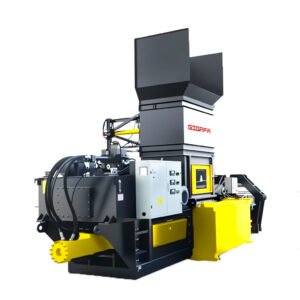
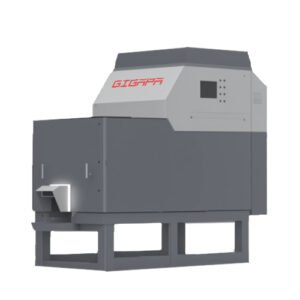

-200x45.png)